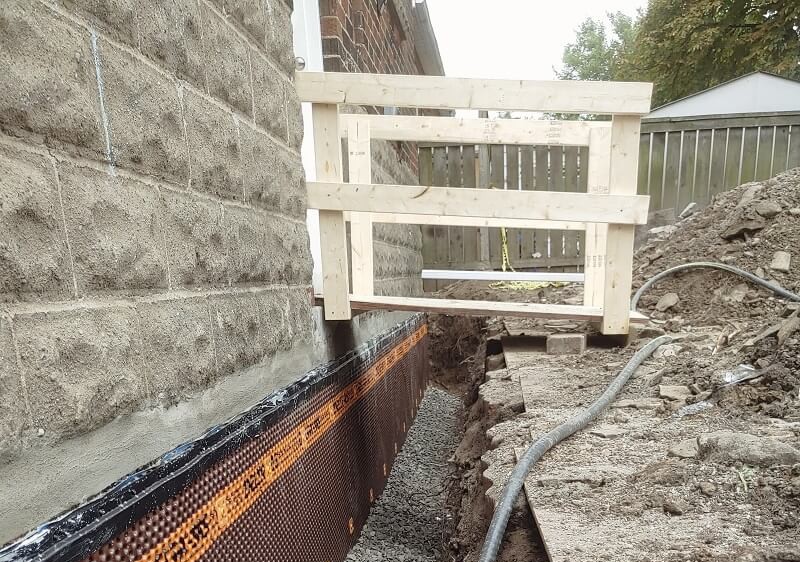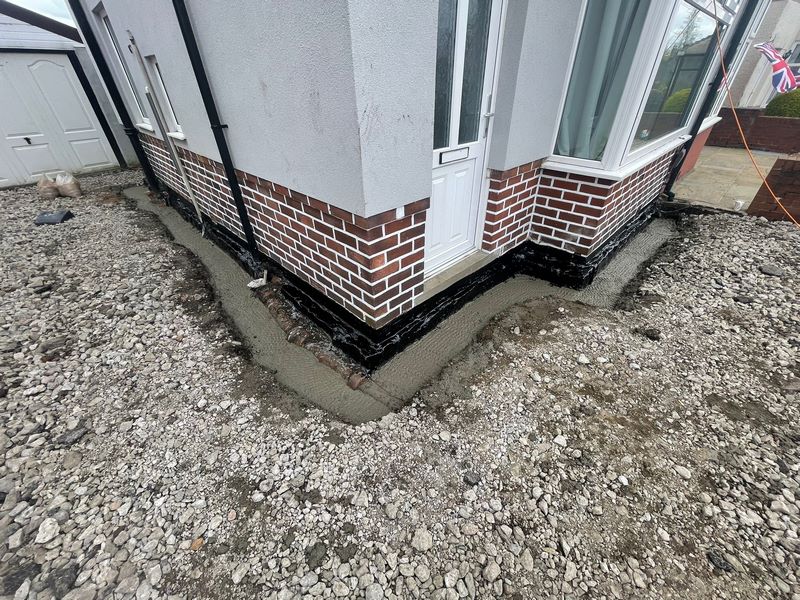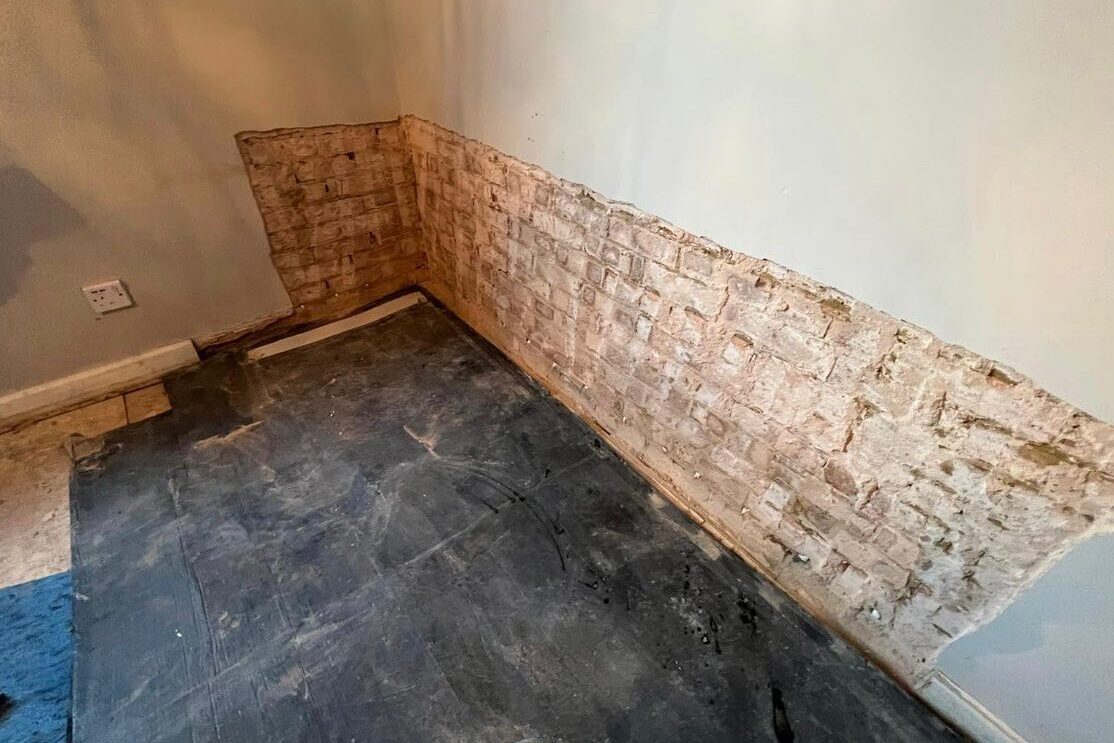Professional advice on dealing with rising damp from damp proofing newcastle
Professional advice on dealing with rising damp from damp proofing newcastle
Blog Article
Exploring the Various Methods and Solutions for Effective Damp Proofing
Dampness in buildings poses considerable obstacles to both architectural integrity and indoor air quality. Numerous strategies and remedies have emerged to combat this pervasive issue. From traditional damp-proof membrane layers to ingenious chemical therapies, each method supplies one-of-a-kind benefits. Comprehending these alternatives is vital for effective moisture control. Choosing the ideal option depends on details building problems and requirements, motivating further exploration right into the most effective damp proofing techniques offered.
Understanding the Sources Of Dampness
Although moisture can occur from numerous resources, comprehending these reasons is important for efficient remediation. Commonly, wetness stems from 3 main resources: rising damp, passing through moist, and condensation. Increasing damp happens when groundwater travels up-wards with porous products, such as brick or stone, frequently due to an absence of an effective obstacle (mould treatment newcastle). Passing through moist is normally brought on by exterior variables, including roofing leakages, damaged rain gutters, or harmed walls, permitting water to infiltrate a property. Condensation, on the various other hand, arises from excess dampness in the air, often exacerbated by bad air flow and temperature distinctions, causing water beads forming on surface areas. Identifying these underlying problems is crucial, as each sort of dampness needs a customized strategy for remediation. Correct analysis assists in establishing the most reliable remedies, inevitably guarding the architectural integrity of a building and enhancing interior air top quality
Traditional Damp-Proof Membranes

Chemical Damp-Proofing Solutions
Chemical damp-proofing remedies provide a cutting-edge technique to stopping dampness breach in structures. These approaches typically entail the application of liquid chemicals that penetrate stonework and create a barrier versus increasing moist. Frequently utilized chemicals consist of silanes, siloxanes, and other water-repellent agents that respond with surface materials to develop a hydrophobic layer.The application process generally needs drilling holes right into the walls, injecting the chemical option, and enabling it to cure. This approach is specifically advantageous for older structures where standard damp-proof membranes may be unwise. In addition, chemical damp-proofing can be much less turbulent and much more affordable than extensive improvement projects.While reliable, these remedies depend on proper application and environmental conditions for peak efficiency. Routine upkeep and tracking are important to assure the long life of the damp-proofing treatment. Generally, chemical damp-proofing represents a flexible choice for guarding buildings against moisture-related damages
Tooth Cavity Wall Surface Construction Methods
Tooth cavity wall building and construction strategies supply countless advantages, specifically in wetness control and power performance. By incorporating an air gap in between two layers of stonework, these wall surfaces successfully alleviate water access while improving insulation. This combination not only shields structures from wetness however also adds to minimized power intake.
Advantages of Dental Caries Walls
When thinking about efficient moist proofing methods, the benefits of cavity walls stand out plainly. Cavity wall surfaces contain 2 different layers, creating an air gap that successfully decreases wetness penetration. This layout lessens the threat of wetness, as the external wall functions as an obstacle against rain and water access. Additionally, tooth cavity wall surfaces enhance thermal insulation, which contributes to energy efficiency by lowering warm loss. They likewise supply audio insulation, assisting to create a quieter indoor environment. The air void enables for air flow, which aids in moisture control and minimizes the likelihood of mold and mildew development. These benefits not just boost the overall comfort of a building yet additionally add to its durability and architectural integrity.
Wetness Control Methods
Effective dampness control strategies are critical in cavity wall construction to ensure long-lasting security against moisture. One primary approach involves the consolidation of weep holes, which help with water drain from the cavity, preventing build-up. In addition, making use of breathable membrane layers can help manage dampness levels while enabling trapped vapor to escape. Appropriate placement of insulation is also crucial, as it should not block water drainage paths. Making certain that the outer fallen leaves of the tooth cavity wall are built with water-resistant materials improves overall toughness. Regular maintenance checks are crucial to recognize any kind of clogs or damage early, securing the framework's integrity. Ultimately, a mix of these strategies develops a robust defense against dampness invasion in tooth cavity wall surfaces.
Insulation and Power Effectiveness
Insulation plays a vital function in enhancing power effectiveness within cavity wall building and construction. By integrating protecting products, these wall surfaces create a thermal barrier that decreases heat loss and decreases energy usage. Efficient insulation not just assists preserve a stable indoor temperature however likewise minimizes the risk of wetness, as it protects against condensation within the wall surface cavity. Numerous techniques, such as making use of rigid foam boards or mineral wool, can be used to achieve ideal insulation performance. Additionally, correct installment is vital to guarantee that gaps and voids are lessened, which can or else compromise energy efficiency. Ultimately, get more info a well-insulated cavity wall contributes significantly to general sustainability and decreases cooling and heating prices for homeowners.
External Damp Proofing Methods
Outside moist proofing methods are essential for shielding frameworks from wetness seepage. 2 effective strategies include the application of waterproof membrane layers and the setup of French drains. These services assist mitigate water build-up and maintain the honesty of structures.
Waterproof Membrane Layer Application
While various techniques exist for stopping moisture ingress, the application of water-proof membranes remains a very efficient exterior wet proofing method. These membrane layers are commonly made from products such as polyethylene, rubber, or changed bitumen, providing a durable barrier against water penetration. The installment process involves using the membrane to the exterior surfaces of wall surfaces or structures, ensuring complete coverage to protect against leakages. Correct attachment and securing at joints are crucial to optimizing effectiveness. Water resistant membrane layers can be applied in various kinds, including fluid coatings and sheet membrane layers, enabling versatility based upon the particular demands of the framework. This approach not only shields structures from dampness yet also improves their longevity and architectural integrity.
French Drainpipe Setup
One reliable approach for taking care of groundwater and stopping wetness accumulation around a structure's structure is the setup of a French drainpipe. This drainage system is composed of a trench loaded with gravel and a perforated pipe that redirects surface area water away from the structure. Correct installation requires cautious preparation, making sure that the drain slopes away from the structure to facilitate ideal water flow. In addition, the place of the drainpipe is important; it needs to be positioned in areas vulnerable to merging or excess moisture. Normal maintenance, including clearing up debris from the gravel and ensuring the pipe stays unhampered, is crucial for long-lasting performance. Eventually, a well-installed French drain can greatly lower the risk of water-related problems in foundations and basements.
Interior Waterproofing Techniques
Interior waterproofing techniques are important for protecting a building's inside from wetness seepage and potential water damages. These approaches typically include the application of specialized materials and methods developed to develop a wetness barrier within the framework. One common approach is making use of water resistant layers or sealants on walls and floors, which avoid dampness from permeating surfaces.Additionally, setting up interior drainage systems, such as sump pumps, can successfully manage water accumulation in cellars and creep areas. Another technique includes using vapor obstacles, which are installed to prevent wetness activity from the ground into living spaces.Moreover, resolving any type of splits or gaps in wall surfaces or foundations with ideal sealants ensures a thorough protection versus water intrusion. By executing these interior waterproofing techniques, residential property proprietors can greatly decrease the risk of mold development, structural damage, and other moisture-related problems. Correct implementation of these techniques is important for lasting security and building integrity.
Routine Maintenance and Assessment Practices
Routine maintenance and examination techniques are essential for guaranteeing the lasting performance of moist proofing remedies in any type of building. Routine checks allow property proprietors to determine very early signs of moisture intrusion, such as peeling off paint, mold growth, and moldy smells. These indicators can indicate underlying issues that call for immediate attention.Inspections need to be performed a minimum of each year, concentrating on at risk areas like cellars, creep areas, and outside walls. Throughout these evaluations, residential or commercial property proprietors need to check out sealants, drainage systems, and air flow to confirm they work correctly.Additionally, keeping downspouts and seamless gutters is important, as blocked systems can result in water buildup near the structure. Executing a routine upkeep schedule, in addition to prompt fixings, can considerably extend the life-span of damp proofing actions and protect the architectural integrity of the structure. Aggressive measures ultimately contribute to the general health and security of the living environment.
Frequently Asked Inquiries
How Much Time Does Damp Proofing Usually Last?
The duration of wet proofing efficiency differs, usually lasting between 20 to 50 years. Elements such as application top quality, environmental conditions, and upkeep techniques greatly influence the longevity of the damp proofing therapy.

Can I Damp Evidence My Home Myself?
The specific contemplated the usefulness of do it yourself damp proofing. With correct study and the appropriate materials, it is feasible. Nonetheless, they likewise recognized the relevance of specialist assistance to guarantee long-lasting efficiency and avoid future issues.
What Are the Signs of Inefficient Damp Proofing?
Indicators of inadequate damp proofing consist of relentless musty smells, noticeable mold and mildew growth, peeling off paint, moist spots on walls, and wood degeneration - damp proofing newcastle. House owners should attend to these concerns immediately to stop more damage and health and wellness issues
Does Damp Proofing Affect Indoor Air Top Quality?

Just How Much Does Expert Damp Proofing Expense?
Specialist damp proofing expenses differ substantially, commonly varying from $1,000 to $5,000 depending upon the property's dimension, the level of the wet issue, and selected methods. Each scenario needs a tailored analysis for exact pricing. Commonly, moisture originates from 3 key sources: rising wet, penetrating damp, and condensation. When thinking about reliable moist proofing approaches, the advantages of cavity wall surfaces stand out prominently. Outside moist proofing techniques are important for securing frameworks from moisture seepage. While different techniques exist for stopping dampness access, the application of waterproof membranes continues to be a highly reliable external moist proofing strategy. Signs of inefficient wet proofing include persistent musty odors, visible mold growth, peeling paint, wet patches on walls, and wood decay.
Report this page